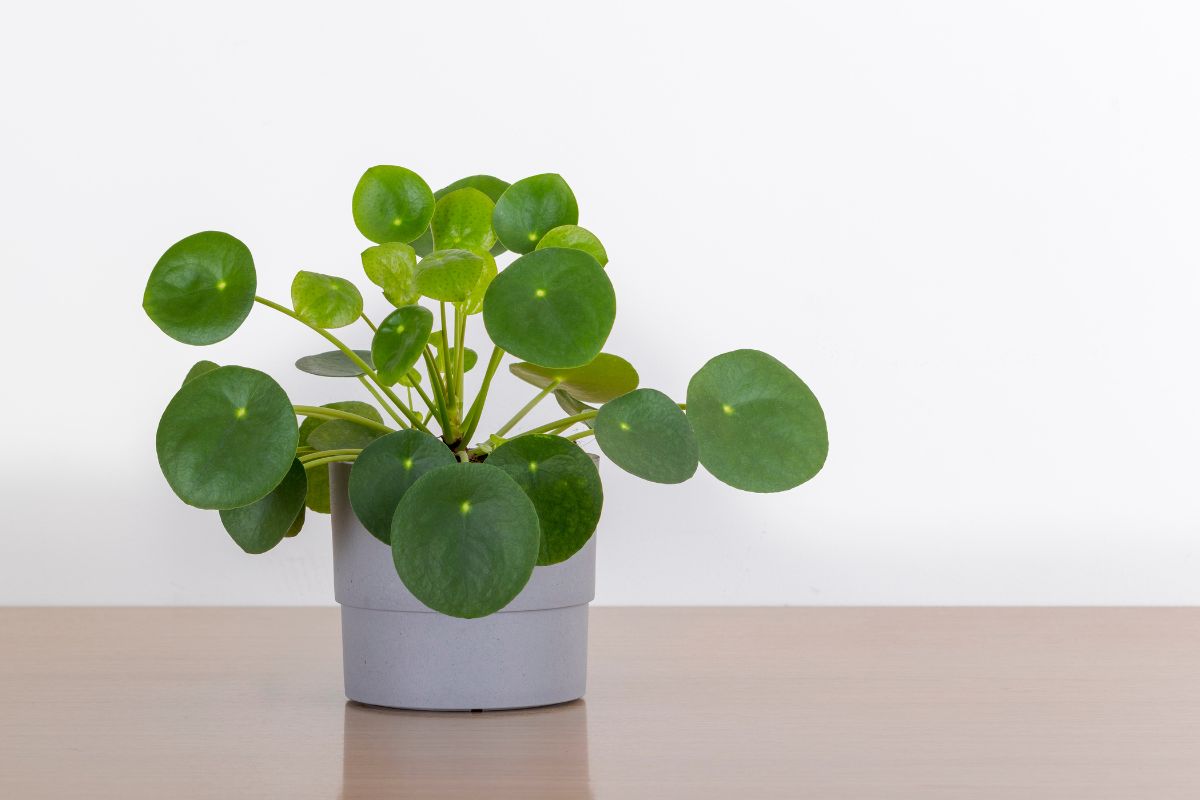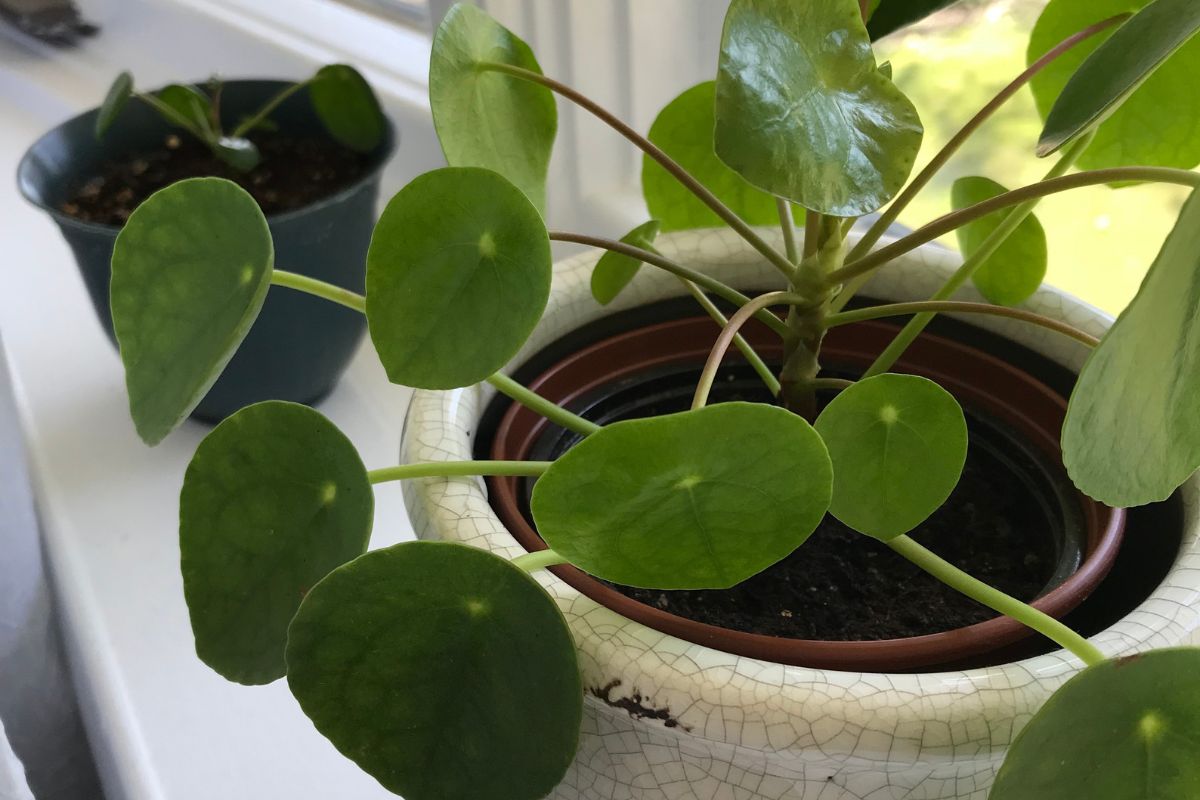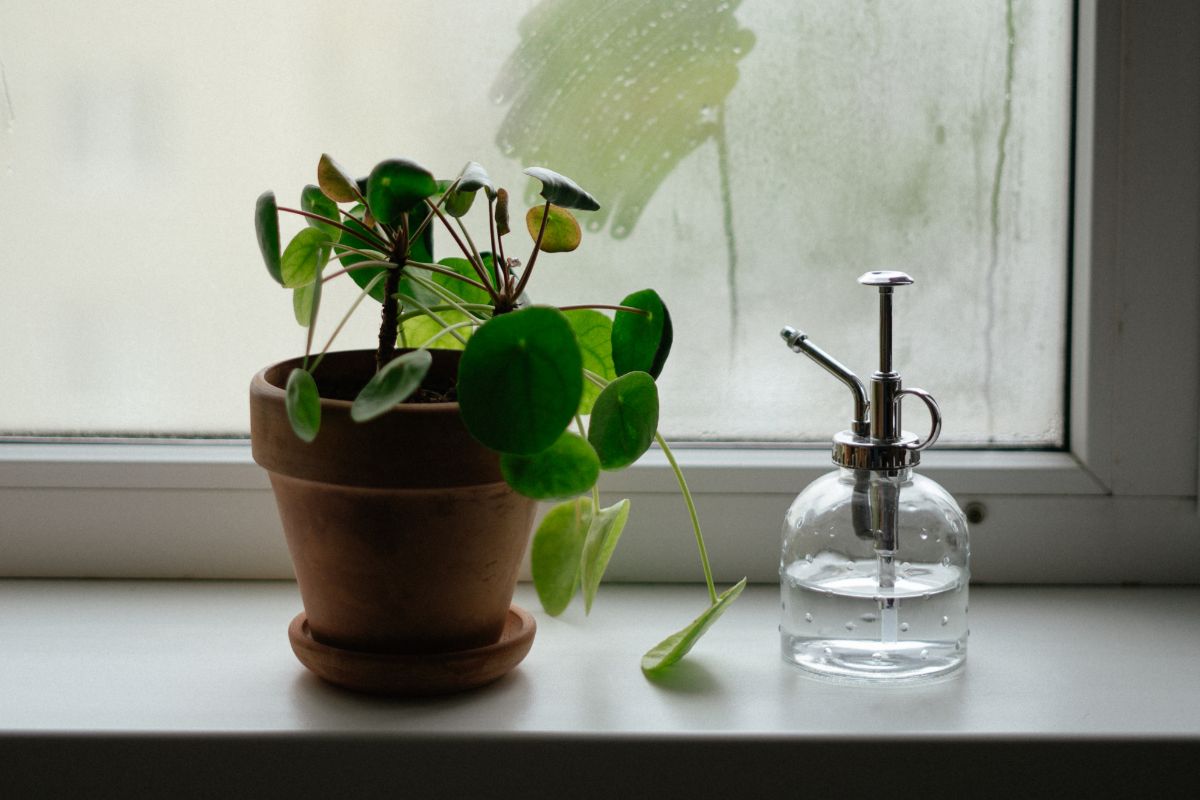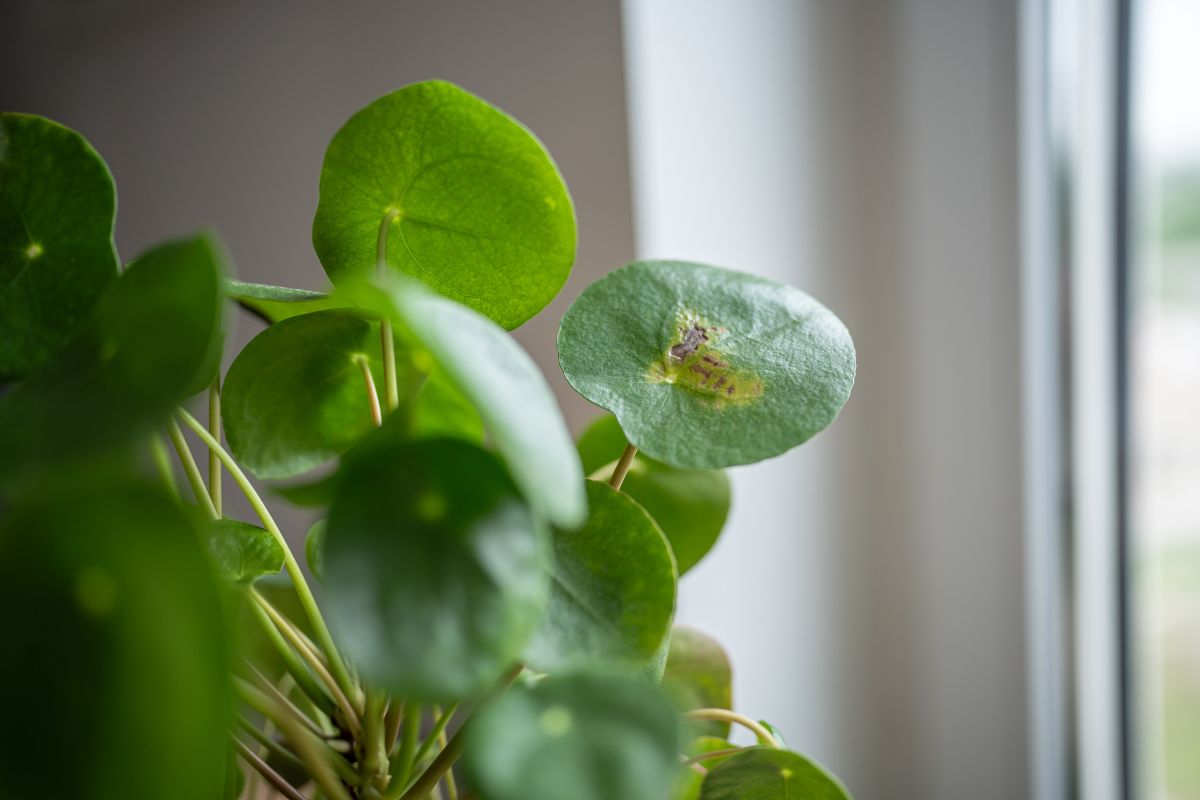Pilea plants are commonly grown indoors as houseplants. They are easy to care for and require minimal maintenance. In fact, they only need water once every two weeks.
If you want to learn how to care for pilea plants, then keep reading this complete guide. Here are some helpful tips and tricks to get you started.
- Related: Houseplant Care Guides
Pilea Plant Overview

A fun houseplant featuring very unique foliage, the Pilea peperomioides is better known as the Chinese money plant, the pancake plant, the coin plant, the missionary plant, and believe it or not, even the UFO plant.
This is a popular plant for its unusually shaped leaves that can grow as wide as 15 cm.
A member of the Urticaceae or Nettle family, the plant is native to China, but is seen worldwide now.
If you enjoy propagating plants, the pilea plant is easily shared. This plant offers a generous production of offshoots that can easily be divided from the parent plant.
How to Care for a Pilea Plant
Soil for the Pilea Plant

Rich, well-draining soil is the ideal growing medium for pilea plants.
The potting mix should be a good quality organic mix. Add in a bit of perlite to avoid soggy or water-logged soil. Make sure there’s nothing blocking the drainage holes on the pot.
Soil bed pH measures the acidity or alkalinity. Measurements range from 1.0 to 14.0 with 7.0 measuring neutral. For your pilea, soil pH should measure between 6.0 and 7.0 for best results.
Temperature for the Pilea Plant
Keep the temperature range for the pilea plant between 55° and 100°F. Avoid temperature fluctuations with these plants.
Light for the Pilea Plant

Pilea plants like medium indirect light. North or East-facing windows will guarantee a happy thriving Pilea peperomioides.
It is always a good idea with houseplants to turn them occasionally so that the entire plant receives adequate light as opposed to only one side.
In the summer, your pilea can sit on the patio in a shaded corner to avoid direct sunlight.
While this plant can be positioned in an area that receives little light, it will become leggy. Leaves may appear to be less developed and small.
Should your plant begin to appear leggy, place it in a better lit location and partially prune (20% of the total plant maximum) to improve the plant’s shape.
Water and Humidity for the Pilea Plant

As an evergreen perennial, it needs average watering. Let the soil bed almost dry out completely between one watering and the next.
The pilea plant’s foliage will begin drooping if it’s thirsty, so this plant will let you know if it is time to water it.
As a tropical plant, the pilea plant likes a bit of humidity. Dry home conditions should be avoided for the pilea, so position it away from heating vents and heating sources.
Humidity can be increased by misting your plant with filtered or distilled water. If your home is really dry, try using a humidifier.
You can also put together a pebble tray with stones and water underneath your pilea container. The plant pot should not touch the water in the tray as that can lead to soggy soil.
Also, keep an eye on the tray for algae growth. Gathering more than one plant together will also aid in increasing humidity in that immediate area.
Fertilizer for the Pilea Plant
Fertilizing once a month is recommended during the growing season in the spring and summer months. An all-purpose, balanced 20-20-20 fertilizer is more than adequate.
Do not feed in autumn or winter when the plant enters dormancy and isn’t growing.
Pruning and Potting the Pilea Plant
To prune your pilea, pinching is better than cutting. The pilea plant has soft stems, so it can easily be pruned by pinching.
Check for dead foliage, overgrowth, and dead stems. Dead leaves will most likely be brown and dry. Pinch above the node of the leaf.
Never prune more than 20 percent of the plant and avoid pruning healthy foliage.
With the correct environmental conditions, this plant is fast-growing and may even outgrow its pot due to roots and offshoots.
The pilea should be repotted every second year in the spring or summer with tropical soil mix. Remove or divide offshoots from the parent plant (mother plant). Select a pot that is one size larger when repotting.
When choosing your container, always check for sufficient drainage holes. The plant will thrive regardless if the pot is ceramic, plastic, or terracotta.
Should you choose a terracotta plant holder, check to make sure you water adequately because terracotta containers will also absorb water from the soil. They are great for moisture-wicking.
Pilea Plant Common Plant Pests, Diseases, and Problems

The pilea plant will be susceptible to various pests that typically invade houseplants, such as fungus gnats, mealybugs, spider mites, and scale insects.
Treat your plant immediately with insecticidal soap or with an organic insecticide, such as neem oil. Continue treating your plant until there is no more evidence of pests in residence.
If leaves are drooping, you are probably underwatering and your pilea needs a drink.
Should you notice mold on the soil bed surface, your pilea may be suffering from root rot.
Check out the roots. If they are lighter in color, your plant should be okay. If they are dark and mushy, trim off the rotten roots and replant them in fresh soil.
If the leaves start curling or doming, the light is probably insufficient.
White spots could appear under the leaves due to salt and/or mineral deposits. If you water with tap water, it could be from the water. Allow the water to sit out for 24 hours before using it for watering.
Pilea Plant Toxicity and Pets
The Pilea peperomioides is non-toxic for both cats and dogs, making it the perfect houseplant for homes with pets.
Propagating the Pilea Plant
The Pilea is an easy plant to propagate. It produces a generous number of offshoots when the parent plant is healthy and well cared for.
Offshoots grow up through the soil bed directly from the root system, but they can also grow from nodes found along the stems of the parent plant. This will occur where old foliage has dropped.
When the offshoots have reached a few inches in height, baby plants, you can separate them from the mother plant.
If you prefer that your pilea attains a bushier appearance, offshoots can be left in place.
Here’s how to divide an offshoot from the parent plant and propagate it to a new pot:
- Gently sift the soil so that the roots of the offshoot are visible.
- Using sterile pruning shears or gardening knife, sever the principal root approximately two inches below the soil bed surface.
- Place your offshoot stem with its roots in a new pot with moist soil. The soil bed should be kept moist, but not soggy until you are sure that the new plant has taken root.
- Once its root system has been established, treat it as you do the parent plant with regular watering and feeding.
Pilea Plant Care Final Thoughts
The Pilea peperomioides is a great plant for beginner home gardeners because it is a forgiving plant if you forget to feed or water it on occasion.
It produces lots of little Pileas if it is well cared for, making it a wonderful plant to cultivate if you like to gift plants to friends and family.
For more houseplants care and grow guides, check these out:
- Nerve Plant Care Complete Guide
- Pitcher Plant Care Complete Guide
- Shamrock Plant Care Complete Guide
Pilea Plant Care FAQs
Does the Pilea Plant need sun?
Pilea plants need bright indirect sunlight. They don’t tolerate direct sunlight very well. You’ll want to keep your pilea indoors during winter months to avoid frost and freezing.
Are Pilea Plants easy to care for?
Pilea plants are easy to care because they’re hardy plants. Water them regularly and make sure they get enough bright light.
Is the Pilea Plant an indoor plant?
Yes, the pilea plant makes for a great indoor plant. It’s an easy plant to are for and grow for beginner plant owners.
Why are leaves falling off my Pilea Plant?
The leaves could fall off the pilea plant from temperature fluctuations, like hot or cold drafts of air. Keep the pilea away from air conditioners, heating vents and any doors or windows.
Why are the Pilea Plant leaves curling?
The leaves on the pilea plant are curling due to a lack of light. Be sure to rotate the plant container regularly, so the entire plant is able to get enough light.


